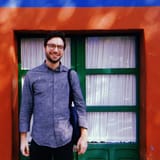Gowanus Rezoning Proceeds to Public Review


The bitterly-contested Gowanus rezoning plan took two crucial steps forward on Monday.
First, State Supreme Court Justice Katherine Levine lifted a temporary restraining order, allowing the proposal to move into public review after a long legal fight over virtual public hearings prompted by the pandemic.
Then, this afternoon, the City Planning Commission certified the neighborhood rezoning application, officially kicking off the seven-month Uniform Land Use Review Procedure (ULURP) necessary to bring the plan to fruition.
The rezoning would allow for about 8,000 new units of housing to be built along the Gowanus Canal in the coming years; about 3,000 of those would be below-market-rate. But the plan had been stalled in court since opponents sued the city in January, arguing the city’s use of virtual public hearings during the pandemic is illegal and inequitable.
Levine has now ruled the proposal can, in fact, proceed through the ULURP process, on the condition that Brooklyn Community Boards 6 and 2 organize a joint hearing on the project, with an outdoor location provided to those who can’t access the hearing virtually.
“The effort to prevent public participation in the guise of increasing public participation has failed,” attorney Ken Fisher, who represents groups in support of the rezoning proceeding, told The Real Deal, who first reported on the ruling.
“The judge properly concluded that she could not block a virtual hearing and that she couldn’t hold the process up any longer. She will order the city to have an in-person location in addition for people who don’t have Internet service, but they are well on their way to figuring out the logistics.”
The Department of City Planning had announced late last week that Levine could lift the restraining order, and had placed the proposal on their draft agenda for today’s hearing.
The community group Voice of Gowanus, which filed the lawsuit, pointed out in a statement that the ruling “was provisional and is contingent upon the City meeting certain requirements, which it has not yet done.”
“The court proceeding continues, and Voice of Gowanus will not waver in its fight on behalf of the community to ensure there is increased public participation, access and transparency at any ULURP public hearings on the massive and controversial Gowanus rezoning plan.”
The removal of the restraining order means the ULURP can move forward while the lawsuit runs its course, a process that will likely involve appeals. As it stands, the ULURP process will run right up against the end of the tenure of Mayor Bill de Blasio as well as the two City Council members, Brad Lander and Steve Levin, whose approval is required for the rezoning to become reality. Any additional delay could push the final decision into the hands of their successors, though such an outcome is less likely now that the process has started.
Meanwhile, open questions remain about the rezoning itself. Voice of Gowanus is also fiercely opposed to the plan, which it says rewards developers “with huge tax cuts and credits, while demanding very few benefits for the community.”
The de Blasio administration has also not yet committed to funding repairs and upgrades at local NYCHA facilities, which Lander has said is a prerequisite for his support. And just today, the city published its draft Environmental Impact Statement for the project, which may prompt more debate in the weeks to come.
But it was clear that proponents of the plan, including City Planning Commission Chair Marisa Lago herself, saw Monday’s events as a victory. At Monday’s hearing, she called the certification “a giant step closer to building an inclusive, healthy, more equitable, green future for this one-time industrial hub.”
“The Gowanus plan is an antidote to the status quo,” she said. “A status quo that has long put wealthy, amenity-rich neighborhoods under glass and out-of-reach for too many New Yorkers.”




